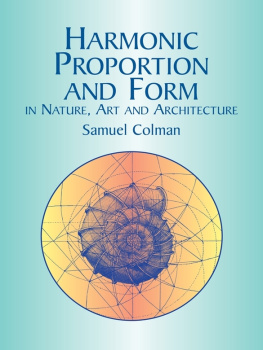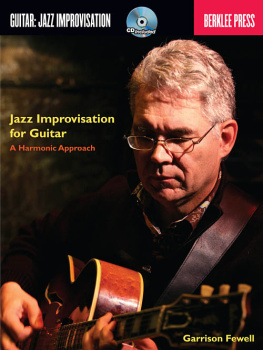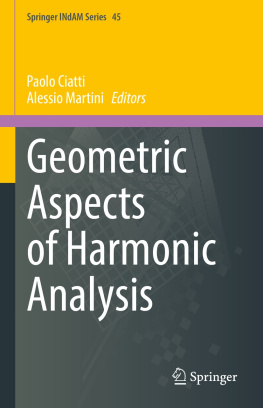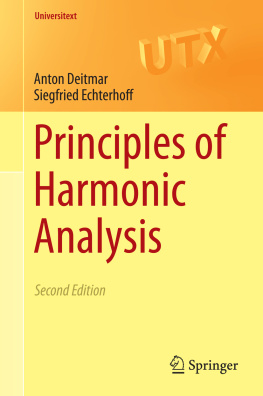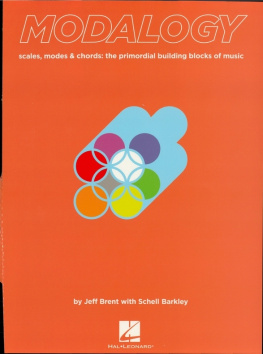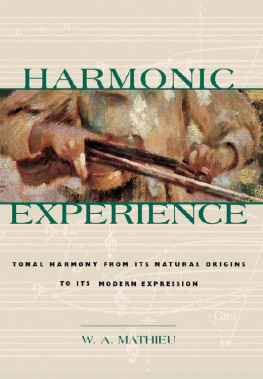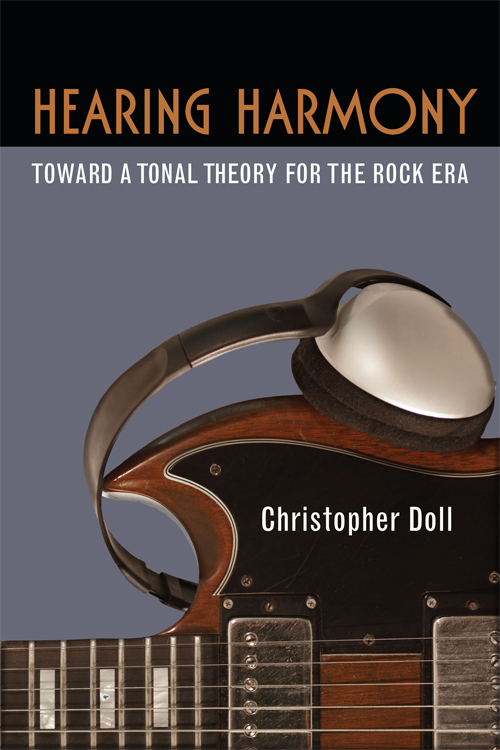
Hearing Harmony
Hearing Harmony
Toward a Tonal Theory for the Rock Era
Christopher Doll
University of Michigan Press
Ann Arbor
Copyright by the University of Michigan 2017
All rights reserved
This book may not be reproduced, in whole or in part, including illustrations, in any form (beyond that copying permitted by Sections 107 and 108 of the U.S. Copyright Law and except by reviewers for the public press), without written permission from the publisher.
Published in the United States of America by the
University of Michigan Press
Manufactured in the United States of America
A CIP catalog record for this book is available from the British Library.
Library of Congress Cataloging-in-Publication Data
Names: Doll, Christopher author.
Title: Hearing harmony : toward a tonal theory for the rock era / Christopher Doll.
Description: Ann Arbor : University of Michigan Press, [2017] | Series: Tracking pop | bibliographical references and index.
Identifiers: LCCN 2016058011| ISBN 9780472073528 (hardcover : alk. paper) | ISBN 9780472053520 (pbk. : alk. paper) | ISBN 9780472122882 (e-book)
Subjects: LCSH: Rock musicAnalysis, appreciation. | Harmony.
Classification: LCC MT 146 . D 65 2017 | DDC 781.66/125dc23
LC record available at https://lccn.loc.gov/2016058011
to Zoe
Contents
Sometimes the chords got to be an obsession...
John Lennon
While a few of the ideas in this book began to take shape well before my formal training in music theory, my written work on this topic started with a paper on the harmony of Radiohead I wrote as a doctoral student at Columbia University, a paper that eventually led to my dissertation Listening to Rock Harmony (2007). Although the current monograph is a new project, written from scratch, it is indeed based on my doctoral work, and so I must begin by acknowledging the efforts and insights of my Columbia theory mentorsJoseph Dubiel, Ellie Hisama, David Cohen, Fred Lerdahl, the late Jonathan Kramerall of whom embodied a terrifically and terrifyingly high standard of precision in writing style and argumentation to which I have only ever been able to aspire.
For helping make the dream of this book a reality, I am in the debt of Christopher Hebert at the University of Michigan Press, who saw in my dissertation the potential for a book well before I did, and of the Tracking Pop series editors Lori Burns, John Covach, Jocelyn Neal, and Albin Zak, who, with Chris, deftly guided the manuscript through the gauntlet of peer review. After Chris left the press for greener pastures, Mary Francis handled the reins with great skill, and with Kevin Rennells steered the monograph toward completion. Drew Bryan did an admirable job copyediting this dense work. I am also very grateful to Sergio Lasun for his careful reading of an early version of the manuscript and for his painstaking improvements of many of my transcriptions. While not exactly duplicating any of my previously published articles, this text does present some ideas and examples that have already appeared in Between Rock and a Harmony Place (Popular Music Worlds, Popular Music Histories: Proceedings of the Biennial Conference of the International Association for the Study of Popular Music, 2009, 8391), Transformation in Rock Harmony: An Explanatory Strategy (Gamut 2, no. 1, 2009, 144), Rockin Out: Expressive Modulation in Verse-Chorus Form (Music Theory Online 17, no. 3, 2011), and Definitions of Chord in the Teaching of Tonal Harmony (Dutch Journal of Music Theory 18, no. 2, 91106).
Walter Everett, whose own work displays an awe-inspiring knowledge of the popular repertory and covers every major issue relevant to the serious study of pitch in this music, has been my primary model as a scholar of popular music, as well as a fountain of encouragement and friendly criticism. Allan Moore, Ken Stephenson, and Philip Tagg, through their own pioneering monographs on popular music, have also greatly influenced my work; Allan and Ken personally have been supportive of my own career, for which I am ever grateful. My Rutgers colleagues and friends Rufus Hallmark and Nancy Rao have been, and remain, tremendous sources of wisdom and encouragement in matters musical and professional. Joshua Walden, over many years, has provided much-needed levity and skepticism within the all-too-serious and self-satisfied confines of the scholarly world. Anton Vishio graciously offered his time and talents in helping me prepare for the horror show that is the academic job market. Upon acquiring gainful employment at the Mason Gross School of the Arts, Rutgers, I was fortunate to receive a semesters sabbatical in the fall of 2010, during which time I wrote a significant chunk of this text. Additionally, funds from the Rutgers Chancellors Scholar program directly supported this project.
I am also honored to acknowledge the following people for their various contributions, large and small, direct and indirect, in their roles as teachers, mentors, colleagues, editors, hosts, and sources of inspiration: Robert Aldridge, Wayne Alpern, Joseph Auner, David Carson Berry, Nicole Biamonte, Giorgio Biancorosso, David Neal Brown, Guy Capuzzo, Jennifer Conner, Trevor de Clercq, Daniel DiPaolo, David Easley, Andrew Flory, Matthew Gelbart, Louis Giannetti, Perry Goldstein, Marion Guck, William Guerin, Daniel Harrison, Eduardo Herrera, Dave Headlam, Kevin Holm-Hudson, Patricia Howland, Brian Kane, Steven Kemper, Andrew Kirkman, the late Steve Larson, Judith Lochhead, Yonatan Malin, Henry Martin, Nancy Murphy, Scott Murphy, Richard Nelson, Drew Nobile, Shaugn ODonnell, Brad Osborn, Steven Rings, Frank Samarotto, Janna Saslaw, Jonathan Sauceda, John Shepard, Elaine Sisman, Daniel Sonenberg, Mark Spicer, George Stauffer, Anna Stephan-Robinson, the late Steven Strunk, David Temperley, Peter Winkler, Robert Zierolf, Ricardo Zohn-Muldoon, and my students at the University of Cincinnati, Stony Brook University, Barnard Pre-College, Columbia University, and Rutgers University.
I wish to thank my father, Thomas Doll, for encouraging me in everything I ever wanted to do, and my mother, Debra Clark, for making me try all the things I didnt want to do. Lastly, my deepest gratitude goes to Zoe Browder Doll and little Rosemary, who had to endure my daily insanity while I wrote this book.
Between Rock and a Harmony Place
In 1990, at the age of thirteen, I bought a newly published book by William J. Dowlding entitled Beatlesongs. By this point, I was already a great fan of the Fab Four, and I was looking to find out everything there was to know about them. Reading this book opened my eyes to a great many things, not only to many details of the Beatles biography, but also, and much more importantly, to several aspects of the bands music. Chief among these musical insights was a statement by John Lennon, a brief quotation from one of his last major interviews:
[If I Fell is] my first attempt at a ballad proper. That was the precursor to In My Life. It has the same chord sequences as In My Life: D and B minor and E minor, those kind of things [sic]. (Dowlding 1989, 69)
It is now difficult for me to convey just how perplexing and intriguing I found this quote when I first read it. At the time, I had no real background in music theory, and I did not understand how the songs In My Life (1965) and If I Fell (1964) could in any way be considered musically the same, even via some magical, abstract things called chord sequences. My curiosity was piqued; I set out immediately to learn as much as I could about chords.
Next page

